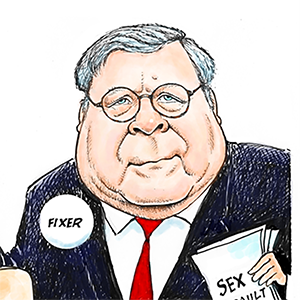Commentary: This is how addiction science is saving lives
Published in Science & Technology News
Like many who have endured childhood trauma, Shannon Hicks turned to drugs at an early age. Pregnant by 16 and a mother of two by 19, she was married and living in her first home — believing she was living the dream.
Shortly after her 20th birthday, Hicks was in a serious car accident and prescribed opioids for the resulting pain. But the medication unearthed long-suppressed trauma from childhood sexual abuse, intensifying her opioid use and deepening her dependence. She described the effect of drugs as similar to being shielded from a storm.
“When it’s pouring down rain on your car, and it’s so loud you can’t hear anything else … then you go under a bridge and suddenly, it’s quiet. Drugs were my bridge,” Hicks said.
Over the next two decades, Hick’s addiction spiraled out of control. She endured four aortic valve replacements — two due to heart infections from reusing needles. Her body was deteriorating, and death felt imminent. But surviving the unthinkable became her turning point. Determined to reclaim her life and help others do the same, she began her recovery journey.
But how, given the depths of her addiction?
Sheer determination and courage gave her the strength to try. And Suboxone (buprenorphine) was the catalyst that made it possible.
Using a “replacement” medication, called medication-assisted treatment (MAT), to treat opioid addiction is backed by decades of research that have led to the development of a suite of such drugs. Clinical trials to determine the effectiveness of MAT have since proved their worth by helping hundreds of thousands overcome opioid use disorders. It was the medical support Hicks needed to begin the challenging work of healing.
Just as critical to her recovery were harm reduction strategies. Access to sterile injection supplies helped her avoid further infection. Naloxone, a drug used to reverse opioid overdose, offered a safety net. And efforts to reduce the stigma surrounding addiction gave her space to seek help without shame.
Stigmatizing language portrays people who use drugs as immoral or criminal, pushing them away from care. Evidence shows that those who benefit from harm reduction and anti-stigma efforts are five times more likely to enter treatment than those not using the programs.
These life-altering measures were made possible by federal investments in addiction science. The National Institute on Drug Abuse, part of the National Institutes of Health, has led much of the research on risk factors for addiction and how best to prevent it and, in those addicted, how to treat it. And the Substance Abuse and Mental Health Services Administration (SAMHSA) and the Centers for Disease Control and Prevention have translated this science into public health practice — bringing treatment and prevention programs into schools, clinics and communities.
These agencies have helped fuel transformative progress — increasing treatment access and outcomes, reducing secondary disease transmission, supporting families and preventing youth from using drugs. Policies informed by this research have lowered addiction-related crime, suicide, overdose and public health costs — proving to be not only effective, but also economically smart investments.
But now, all the hard-won progress made for people like Hicks is at risk.
Actions by President Donald Trump, the Department of Government Efficiency initiative, and Health and Human Services Secretary Robert F. Kennedy Jr. have already disrupted operations of federal agencies that fund addiction research.
And most recently, the 2026 budget— otherwise known as the “big, beautiful bill” — was passed into law, forecasting even deeper cuts to these agencies, billions below 2025 levels. Adding injury to insult, reductions in Medicaid, the largest single payer of behavioral health services in the U.S., including addiction treatment, will begin to take effect.
If enacted, these cuts would further devastate addiction science and practice. Research into the causes, consequences and treatment of addiction would stall. Lifesaving clinical and community services would shrink or disappear. Programs shown to prevent youths from initiating drug use would vanish. We risk reversing decades of progress, condemning future generations to needless suffering and increasing the overall costs to society.
This imminent threat has galvanized the addiction science community. In response, the Addiction Science Defense Network (ASDN) was formed to advocate for preserving addiction science research and research-based treatment, prevention and policies that help us to combat addiction. Nearly 500 addiction scientists and practitioners, 32 organizations representing more than 32,000 scientists and 100,000 providers, and the advocacy group Stand Up for Science — with 60,000 members — have endorsed a statement of concern.
The statement and other advocacy efforts urge Congress, Kennedy and the directors of NIH, the CDC and SAMHSA to fulfill their responsibility to support science-driven policies and practices that protect public health. We ask that the damage already done be mitigated with bipartisan revisions to their budgets so that funding for these agencies is preserved to protect the solutions that help people recover, the services that stabilize families and the infrastructure that safeguards future generations from substance abuse.
For Hicks, her story is one of both tragedy and triumph. Her life was nearly lost to addiction, but science-based treatment and compassionate care saved her. Today, she is a recovery coach, harm reduction specialist, youth prevention facilitator and enthusiastic advocate for medication-assisted recovery. She’s also a full-time college student pursuing a master’s in public health.
Her transformation is proof of what’s possible when research and recovery meet. With the right support, lives can be rebuilt. Futures can be reclaimed. Communities can heal.
But without sustained investment in addiction science, Hick’s story could become the exception — not the rule.
____
Diana Fishbein, Ph.D., is a senior behavioral neuroscientist at the Frank Porter Graham Child Development Institute at the University of North Carolina at Chapel Hill and a part-time researcher at Penn State University.
_____
©2025 Chicago Tribune. Visit at chicagotribune.com. Distributed by Tribune Content Agency, LLC.







Comments